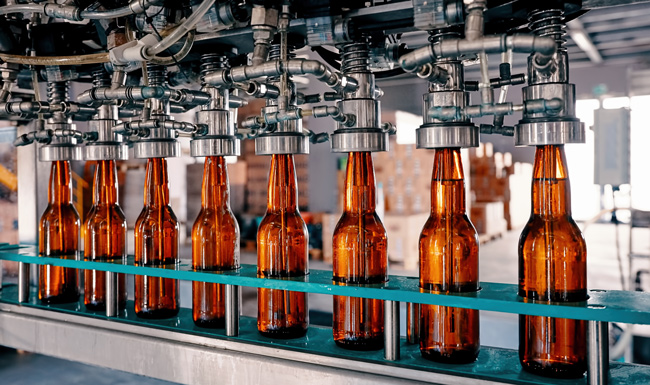
E-Invoicing and Its Geopolitical Stakes
France’s electronic invoicing reform relies on a Y-architecture, where Partner Dematerialization Providers (PDPs) play a central role in issuing and…
Generix Announces the Appointment of Olivier Vaillancourt as General Manager for North America View the press release

Three key themes stand out as we survey the new supply chain technology deployment landscape:
Let’s explore each of them one at a time.
Technologies that support the ability to get the right information to the right decision maker in the supply chain at the right time include 5G connectivity, with its promise of ultra-reliable communications and low latency; cloud-based applications that knit together various business systems; and Internet-enabled sensors on production equipment that capture data about the operating state.
5G is set to become a key enabler of smart supply chain initiatives as its features provide manufacturers the opportunity to introduce or enhance a variety of real-time and highly reliable applications. As McKinsey & Co. write, “If 5G consistently meets its performance promises, [programmable logic controllers] could be virtualized in the cloud, enabling machines to be controlled wirelessly in real time at a fraction of the current cost.” In addition, “5G speeds up the decision-cycle time, allowing massive amounts of data to be ingested, processed, and actioned in near real time.”
AI-powered analytics, leveraging the wealth of data generated by operations, enable quality control, predictive maintenance, and supply chain optimization. In recent years, all manner of cloud-based applications for enterprise resource planning (ERP), manufacturing execution systems, and warehouse management systems have been imbued with artificial intelligence and analytics capabilities, enabling them to make smart predictions about future needs for raw materials, work-in-progress goods, and demand for final products. Leveraging the previous thread about 5G connectivity and IoT sensors deployed at scale, the addition of artificial intelligence and analytics enables manufacturers to execute on the vision of the smart factory and the intelligent supply chain.
As an enabling technology, artificial intelligence also provides the foundation for autonomous planning; this is predicated on internal data as well as external data from suppliers, customers, demographics and broader economic indicators.
As IndustryWeek notes, in the wake of the pandemic, “automation will be a key component of the effort to revive domestic manufacturing … advances in automation and robotics have drastically increased productivity across a number of manufacturing processes.” In addition to robotics, automation depends upon access to real-time data to enable process automation, supervision, and remote control. Real-time data collection along the supply chain at scale is made possible by the widespread use of digital sensors (IoT) and low latency 5G connections. As McKinsey and Co. write, “automated equipment-monitoring and process-control systems can bolster the continuity of operations, even with skeletal crews. These systems can further optimize operating-equipment and process parameters, increasing overall equipment efficiency for reduced cycle times and higher yield, quality, energy, and throughput.” Ultimately, McKinsey & Co. write that what we see is, “a complete consolidation of devices and process management. ‘Process and device’ will be inseparable; physical things become part of the process. What this means for the plant is that machines and workflows merge to become a single entity. The work flow ceases to exist as an independent logistical layer; it is integrated into the hardware4.”
Supply chain experts agree that the new normal, this post-pandemic world, is here to stay. In response, manufacturers and their suppliers have undertaken several initiatives, such as integrating warehouse management systems into their warehouses, to meet the challenges brought about by Covid-19. With many initiatives accomplished in record time, supply chain participants have enabled new supply chain resiliency.
As McKinsey & Co. notes, “players utilizing digital solutions are better positioned to weather the storm, having moved faster and further than their peers during the crisis. As companies think about restoring operations and building the muscle to deal with future crises, using digital technologies will be top of mind for many.”
Generix Group North America provides a series of solutions within our Supply Chain Hub product suite to create efficiencies across an entire supply chain. Our solutions are in use around the world and our experience is second-to-none. We invite you to reach out to us here to learn more.

France’s electronic invoicing reform relies on a Y-architecture, where Partner Dematerialization Providers (PDPs) play a central role in issuing and…

The B2B mandate in Germany, set to take effect on January 1, 2025, marks a crucial step in the European…

Following the October 15 announcement regarding the abandonment of the PPF development, the DGFIP and its partner AIFE are ramping…

Work with our team to build your ideal supply chain software stack and tailor it to your unique business needs.